Samsung Galaxy Note 5
Introduction
As the fourth successor of the product that defined what a phablet should be, Samsung Galaxy Note5 is arguably the most radical release in the product family to date. The newcomer marks a noteworthy departure (no pun intended) from all of its predecessors in terms of both design and available hardware features.Top notch specs are always to be expected from a Samsung Galaxy Note and the latest iteration surely delivers on this front. The Galaxy Note5 packs the most powerful chipset in the business, the fastest memory, and one of the best cameras around. The S Pen is here too - clickable and more productive than ever.
Brand new look and premium materials ensure that Samsung Galaxy Note feels as premium as its hardware requires. Take a look at the full list of key features the Note5 has to offer below.
Key features
- 5.7" QHD (2560 x 1440 pixels) Super AMOLED display with 518ppi
- 64-bit Exynos 7420 chipset with 14nm architecture; octa-core CPU (quad 2.1GHz & quad 1.5GHz), Mali-T760MP8 GPU
- 4GB of LPDDR4 RAM; 32/64GB of UFS 2.0 flash memory
- Android 5.1.1 Lollipop with TouchWiz UX
- 16MP f/1.9 camera with OIS; Auto HDR; 4K video capture; IR white balance detection sensor, Pro mode and RAW shooting
- 5MP f/1.9 front-facing camera
- Cat. 9 LTE network support; WiFi 802.11 a/b/g/n/ac (2.4/5GHz); GPS, GLONASS and Beidou; Bluetooth 4.2; NFC; MST mobile payment support
- 3,000mAh non-removable battery; Qi (WPC) and PMA wireless charging support
- Fingerprint scanner
- Heart-rate monitor
- Redesigned clickable S-Pen
- Metal chassis; Corning Gorilla Glass 4 front and back
- Wired and wireless Quick Charging
Main disadvantages
- No microSD card slot; no 128GB built-in memory option
- The battery is not user-replaceable
- No IR port
- No enhanced resistance to liquids or dust
- No stereo speakers
- The body of the smartphone is quite slippery without a case
- Not available in key global markets (at least for the time being)
Dropping the memory card slot and the removable battery from the Note5 specs surely raises eyebrows - both hardware features have been a staple for the product family since day one. Samsung appears confident that the bevy of available charging options will keep users happy.
As always, we will kick our Samsung Galaxy Note5 review with an unboxing, followed by an overview of its design and build. Head over to the next page for a closer look at the flagship phablet.
Unboxing
Samsung Galaxy Note5 unsurprisingly features a retail box with the same design as that of Samsung Galaxy S6. Its contents include the handset, wall charger, microUSB cable, stereo headset, and replacement tips for the S Pen.As far as basic accessory needs go, the Note5 has you covered right out of the box. Samsung is offering a range of optional accessories for the flagship phablet.
The hardware keyboard case is arguably the coolest accessory averrable for the Note5. It covers the bottom quarter of the display, but the UI adjusts accordingly, so you don't need to remove it to access the dialer, for example.
You also get hardware Task switcher/Home/Back buttons, since the ones underneath are inaccessible. When you don't need the keyboard, you can simply snap it on the back of the case and continue in full screen mode.
Samsung Galaxy Note5 360-degree spin
The Samsung Galaxy Note5 is undoubtedly a big device. It measures 153.2 x 76.1 x 7.6 mm and weighs 171 grams making it shorter, narrower, thinner and lighter than its predecessor Galaxy Note 4 all the while retaining the 5.7" display.Design and build quality
Samsung Galaxy Note5 features the design language that debuted alongside the Galaxy S6 and Galaxy S6 edge, dominated by a decidedly premium fusion of metal and glass. The most distinctive design feature in the phablet is its back, which is curved towards the edges - a unique touch in a Samsung device for the time being.There is no denying that Samsung Galaxy Note5 is the best looking member of the product family to date. The handset finally looks as premium as its price tag and industry reputation require, yet it cannot be mistaken for anything other than a Samsung Galaxy Note.
Samsung Galaxy Note5 will be available in four colors - Black Sapphire, White Pearl, Gold Platinum and the newly introduced Silver Titanium. It is worth noting that color availability will vary by markets.
Build quality of the Samsung Galaxy Note5 is exceptional. The handset is a crafted entirely from metal and Corning Gorilla Glass 4, so it will stand up even to the demands of the heaviest power user.
The only downside of having a smartphone made of glass is that the material might be prone to cracking in an accidental drop. A protective case is therefore highly recommended.
With physical measures of 153.2 x 76.1 x 7.6 mm, Samsung Galaxy Note5 is considerably more compact than Samsung Galaxy Note 4 (153.5 x 78.6 x 8.5 mm). The 2.5mm difference in width between the two devices is particularly impressive - it makes the new Note feel considerably more compact than its predecessor despite packing a screen with the same size.
At 171 grams, the new Note is also lighter than last year's model despite utilizing more premium materials. All in all, the handset is a massive improvement over the outgoing model in terms of physical measures.
Samsung Galaxy Note5 is quite possibly the easiest device with a 5.7" display to handle thanks to its fairly compact measures, which allow many common tasks to be performed with one hand. Users with small hands however, might find the device a tad slippery without a case.
The tactility of the smartphone is superb thanks to the premium materials used in its making. However, the same materials make the Note5 prone to smudges.
Display
Samsung Galaxy Note5 comes with a 5.7" Super AMOLED display with QHD (2560 x 1440 pixels) resolution, which results in a pixel density of 518ppi. The diagonal sweet spot was already established with the Note 3 and for third generation in a row it has remained unchanged. The Galaxy Note family has always boasted some of the best displays
in the business and the tradition continues with the latest iteration.
Alongside the usual infinite contrast, the screen boasts accurate colors
(you can still make them saturated in the settings), as well as top
notch brightness and viewing angles.
The Galaxy Note family has always boasted some of the best displays
in the business and the tradition continues with the latest iteration.
Alongside the usual infinite contrast, the screen boasts accurate colors
(you can still make them saturated in the settings), as well as top
notch brightness and viewing angles.Viewing angles are great though you might see a minor blue/green tint at steeper angles (it's not uncommon with OLEDs).
 If you boost the brightness slider you can reach the brightness
levels of a good LCD. Keep in mind that in very bright conditions the
auto brightness mode can push the screen brightness up to 620nits along
with the screen contrast and color saturation. This alone makes it the
brightest SuperAMOLED display by Samsung that we've tested – brighter
than even the S6 edge+.
If you boost the brightness slider you can reach the brightness
levels of a good LCD. Keep in mind that in very bright conditions the
auto brightness mode can push the screen brightness up to 620nits along
with the screen contrast and color saturation. This alone makes it the
brightest SuperAMOLED display by Samsung that we've tested – brighter
than even the S6 edge+.These sorts of brightness levels can be easily beaten by the competing smartphones with LCD screens, but the amazingly low reflectivity of Samsung's SuperAMOLED displays means you can keep the brightness slider down even in bright sunlight conditions and still enjoy legible screen contents.
The Screen mode setting allows you to choose a color temperature, contrast and saturation preset that best matches your preferences. We found the Basic setting to provide the most accurate colors (average DeltaE 2000 of 2.5 is at the level of calibrated display), though with this mode you might find the screen image to lack some contrasty punch.
If the screen looks too bland to your taste at Basic mode, we suggest you go for the AMOLED photo mode, which is still acceptably color accurate (average DeltaE 2000 of 5) but it boosts the contrast along with the saturation of some individual colors such as the greens or the magentas. The AMOLED video mode pushes colors even further and so does the Adaptive display mode, so it would be up to your personal preference which one you would use.
| Display test | 50% brightness | 100% brightness | ||||
| Black, cd/m2 | White, cd/m2 | Black, cd/m2 | White, cd/m2 | |||
| 0.000 | 183 | ∞ | - | 439 | ∞ | |
| - | - | - | - | 620 | - | |
| 0.000 | 172 | ∞ | - | 410 | ∞ | |
| - | - | - | - | 540 | - | |
| 0.17 | 208 | 1197 | 0.52 | 705 | 1361 | |
| 0 | 149 | ∞ | 0 | 372 | ∞ | |
| 0 | 291 | ∞ | 0 | 399 | ∞ | |
| 0 | 208 | ∞ | 0 | 473 | ∞ | |
| 0.000 | 208 | ∞ | 0.000 | 473 | ∞ | |
Sunlight legibility is excellent too. Samsung has once again tuned the display to go above the brightness level that's available to the user when in bright environment. The feature allows you to read your email even under direct sunlight.
Sunlight contrast ratio
- Nokia 808 PureView 4.698
- Samsung Galaxy S6 edge+ 4.615
- Samsung Galaxy E7 4.485
- Samsung Galaxy A3 4.241
- Samsung Galaxy S6 4.124
- Samsung Galaxy S6 edge 4.124
- Samsung Galaxy Note5 4.090
- Samsung Galaxy Note 4 4.033
- Apple iPhone 5 3.997
- Samsung Galaxy Note 3 3.997
- Samsung Galaxy A5 3.895
- Samsung Galaxy J7 outdoor 3.879
- Samsung Galaxy mini 2 1.114
Controls
Above the display is where the earpiece resides, accompanied by an ambient light and a proximity sensor. The 5MP front-facing unit completes the setup.Samsung's signature home button sits below the screen of the Note5 - it packs a fingerprint sensor and is surrounded by a metal ring. A duo of capacitive keys flank the button as always.
The volume control buttons of the phablet sit on its left side. Its power/lock key is placed on the right.
The top of the Note5 is home to the nano-SIM card slot and a secondary microphone for active noise canceling. There is no IR port this time around.
The bottom of the smartphone features similar layout as Samsung Galaxy S6, save for the S Pen slot. The device's loudspeaker, its 3.5mm audio jack, and its microUSB port are all located there.
Samsung Galaxy Note5's back is where the slightly protruding 16MP camera sensor can be found. The handset's heart rate sensor and LED flash sit on the right side of the camera.
S Pen
Samsung Galaxy Note5 features a brand new S Pen that's once again an improvement over last year's solution. The stylus utilizes a new release mechanism which requires a user to click its top before taking it out, thus eliminating the possibility of accidentally removing it.The signature side button is once again present on the S Pen. Curiously, Samsung has opted for the smooth texture on the stylus, thus making it more slippery than its predecessors.
We really wish that the clickable top of the S Pen offered additional functionality. For the time being it can only act as a release mechanism and an occasional clicky stress reliever.
Battery life
This is arguably the part of the review that we were most curious about. As you probably know by now, Samsung equipped the Galaxy Note5 with a non-removable 3,000mAh Li-Po battery that's smaller than the swappable 3,220mAh Li-Ion battery found in last year's Galaxy Note 4.As it turns out, despite its smaller battery, the Samsung Galaxy Note5 pulled off almost the same result as its predecessor in our battery test. The newcomer achieved an endurance rating of 85 hours, which means it will easily make it through three full days if you use it for an hour each of telephony, web browsing, and video playback daily.
 Samsung’s quick charger can top up the battery in less than 90
minutes from empty, so it is incredibly convenient to use. Wireless
charging, on the other hand is so fast and so liberating, that there'll
be no turning back. You're fully charged in just 120 minutes.
Samsung’s quick charger can top up the battery in less than 90
minutes from empty, so it is incredibly convenient to use. Wireless
charging, on the other hand is so fast and so liberating, that there'll
be no turning back. You're fully charged in just 120 minutes.As always, there are two battery saving modes available to the user - Power Saving and Ultra Power Saving. The latter turns off all, but the most crucial phone features and allows the phablet to last for hours with single percentage digits of battery left.
Combined with the plethora of options to rapidly charge the phablet, we reckon that the battery endurance of Samsung Galaxy Note5 should be good enough for even a seasoned power user. Yes, a removable battery would have been a great thing to have, but we find the sleek metal/glass body of the Note5 to be a fair tradeoff.
You can also always get an external powerbank as these accessories are at their cheapest now.
Connectivity
Samsung Galaxy Note5 packs a kitchen sink full of connectivity options, headed by Cat. 9 LTE connectivity with support for download speeds of up to 450 MB/s. If you have access to an HSPA network only, you'll get a maximum download speed of 42Mbps.Samsung Galaxy Note5 supports Wi-Fi ac networks for fast local networking. Wi-Fi a/b/g/n at 2.4GHz and 5GHz networks are also supported, of course.
Then there's Bluetooth 4.2 LE with apt-X codec support (for high-quality audio streaming). Wired connectivity takes place over microUSB 2.0 port.
The USB has MHL 3.0 functionality, which allows it to output 2160p video at 30fps, coincidentally the top mode for the camera. The port also supports USB HID devices, like a keyboard and a mouse.
There is also NFC, which is used for Samsung Pay, which lets the Note5 replace the credit cards in your wallet. It's also used for pairing with other devices and reading NFC tags as well.
Oddly, Samsung opted to leave the IR blaster off the Galaxy Note5, so remote controlling your home appliances is a no-go this time around.
Performance
Samsung Galaxy Note5 packs an Exynos 7420 chipset developed in-house by Samsung with 1.5 GHz quad-core Cortex-A53 CPU, 2.1 GHz quad-core Cortex-A57 CPU, Mali-T760MP8 GPU, and 4GB of RAM. Save for the slight bump in RAM, the hardware setup is the same as in Samsung Galaxy S6 and Galaxy S6 edge. First up is the CPU-centric Geekbench 3 test. Rather unsurprisingly,
the Galaxy Note5 and Galaxy S6 edge+ performed right in line with the
Samsung Galaxy S6 family.
First up is the CPU-centric Geekbench 3 test. Rather unsurprisingly,
the Galaxy Note5 and Galaxy S6 edge+ performed right in line with the
Samsung Galaxy S6 family.GeekBench 3
Higher is better
- Samsung Galaxy S6 Active 5246
- Samsung Galaxy S6 (5.1.1) 5242
- Samsung Galaxy S6 edge+ 5158
- Samsung Galaxy Note5 5124
- Samsung Galaxy S6 edge 5095
- HTC One M9 3761
- LG G4 (final) 3522
- Sony Xperia Z3+ final 3402
- Asus ZenFone 2 ZE551ML 2922
AnTuTu 5
Higher is better
- Samsung Galaxy S6 Active 70938
- Samsung Galaxy S6 edge 70053
- Samsung Galaxy Note5 69465
- Samsung Galaxy S6 edge+ 68324
- Samsung Galaxy S6 (5.1.1) 67553
- HTC One M9 51427
- Sony Xperia Z3+ final 49441
- LG G4 (final) 48693
- Asus ZenFone 2 ZE551ML 48361
Basemark OS II
Higher is better
- Samsung Galaxy Note5 1852
- Samsung Galaxy S6 edge+ 1833
- Samsung Galaxy S6 edge 1826
- Samsung Galaxy S6 Active 1650
- HTC One M9 1526
- Sony Xperia Z3+ final 1410
- Asus ZenFone 2 ZE551ML 1267
Basemark OS II (single-core)
Higher is better
- Samsung Galaxy Note5 3585
- Samsung Galaxy S6 edge+ 3567
- Samsung Galaxy S6 Active 3489
- Samsung Galaxy S6 edge 3372
- HTC One M9 2401
- Asus ZenFone 2 ZE551ML 1853
- Sony Xperia Z3+ final 1453
Basemark OS II (multi-core)
Higher is better
- Samsung Galaxy Note5 18653
- Samsung Galaxy S6 Active 18536
- Samsung Galaxy S6 edge 16856
- Samsung Galaxy S6 edge+ 16291
- HTC One M9 10128
- Asus ZenFone 2 ZE551ML 7002
- Sony Xperia Z3+ final 6995
GFX 2.7 T-Rex (1080p offscreen)
Higher is better
- Samsung Galaxy S6 edge 59
- Samsung Galaxy S6 (5.1.1) 57
- Samsung Galaxy Note5 56
- Samsung Galaxy S6 edge+ 56
- Sony Xperia Z3+ final 50
- HTC One M9 49
- Samsung Galaxy S6 Active 45
- LG G4 (final) 34
- Asus ZenFone 2 ZE551ML 30
GFX 2.7 T-Rex (onscreen)
Higher is better
- HTC One M9 50
- Sony Xperia Z3+ final 46
- Samsung Galaxy S6 edge 39
- Samsung Galaxy S6 (5.1.1) 37
- Samsung Galaxy S6 edge+ 37
- Asus ZenFone 2 ZE551ML 30
- Samsung Galaxy Note5 29
- Samsung Galaxy S6 Active 25
- LG G4 (final) 25
GFX 3.0 Manhattan (1080p offscreen)
Higher is better
- Samsung Galaxy S6 edge 26
- Samsung Galaxy S6 Active 25
- Samsung Galaxy S6 (5.1.1) 25
- Samsung Galaxy S6 edge+ 25
- HTC One M9 23
- Sony Xperia Z3+ final 21
- Samsung Galaxy Note5 21
- LG G4 (final) 15
- Asus ZenFone 2 ZE551ML 13
GFX 3.0 Manhattan (onscreen)
Higher is better
- HTC One M9 24
- Sony Xperia Z3+ final 21
- Samsung Galaxy S6 edge 15
- Samsung Galaxy S6 Active 15
- Samsung Galaxy S6 (5.1.1) 15
- Samsung Galaxy Note5 15
- Samsung Galaxy S6 edge+ 15
- Asus ZenFone 2 ZE551ML 12
- LG G4 (final) 9.4
Basemark X
Higher is better
- Samsung Galaxy S6 Active 27188
- Samsung Galaxy S6 edge 27046
- Samsung Galaxy S6 edge+ 26333
- Samsung Galaxy Note5 26281
- Samsung Galaxy S6 (5.1.1) 26125
- Sony Xperia Z3+ final 20767
- HTC One M9 19848
- Asus ZenFone 2 ZE551ML 13414
Kraken 1.1
Lower is better
- Samsung Galaxy Note5 3702
- Samsung Galaxy S6 edge+ 3767
- Samsung Galaxy S6 Active 3975
- Samsung Galaxy S6 edge 3989
- Samsung Galaxy S6 (5.1.1) 4003
- LG G4 (final) 4639
- Asus ZenFone 2 ZE551ML 5057
- HTC One M9 5500
- Sony Xperia Z3+ final 9204
BrowserMark 2.1
Higher is better
- Samsung Galaxy S6 edge 2702
- Samsung Galaxy S6 (5.1.1) 2641
- Samsung Galaxy S6 edge+ 2591
- Samsung Galaxy Note5 2324
- Samsung Galaxy S6 Active 2321
- LG G4 (final) 1992
- Asus ZenFone 2 ZE551ML 1853
- HTC One M9 1681
- Sony Xperia Z3+ final 1436
Samsung surprised quite a few people by opting for the Exynos 7420 in the Note5 - previously, the Korean giant utilized exclusive chipsets for the product range. However, no one should knock the manufacturer for choosing this route - the 14nm 7420 is roughly a year ahead of its closest competitor in terms of performance, heat management, and power efficiency.
16MP main camera
Samsung has opted to use the superb 16MP Sony IMX240 sensor in the Galaxy Note5, coupled with f/1.9 lens. That's the same excellent setup that's found in Samsung Galaxy S6 and Galaxy S6 edge. One of our favorite features is the quick launch - double press the
Home key from anywhere in the UI and the camera pops up in less than a
second.
One of our favorite features is the quick launch - double press the
Home key from anywhere in the UI and the camera pops up in less than a
second.The camera UI is pretty simple and most settings are available on the viewfinder. The selection changes as you go between the different shooting modes. You can download new shooting modes, but currently only Sports shot is available.
Pro mode lets you control the focus manually, adjust exposure compensation and ISO, white balance too. You can save the current manual settings into a preset for easy recall later.
The color adjustments are very advanced - you get several presets (like color effects), but you can make your own. There are sliders to boost shadows and reign in highlights, adjust the contrast and saturation, the temperature and tint. With these you can create Instagram-y filters or make the best of the camera's dynamic range.
Samsung Galaxy Note5 can also capture images in RAW format. The latter allow those with a knack for post-processing to really get creative with their images.
Live Broadcast is a hot new feature that debuted alongside Samsung Galaxy Note5. The feature is built right into the camera interface and allows a user to share live feed with the world via YouTube. The feature requires the user to sign in with a Google account. The setup is quick and easy.
Overall, thanks to the powerful hardware on tap, the camera of Samsung Galaxy Note5 felt fast and responsive at all times. The shooting experience it delivers is one of the best in the business.
We can say the same thing about image quality. The images have plenty of detail, excellent colors and dynamic range and the sharpness is among the best we've seen on a mobile phone. Low light photos also came out great.
The HDR mode does a great job of lighting up the shadows so image exposure is good even in high-contrast scenes. Thanks to the Live HDR mode you can see the result of the HDR mode even before you've snapped the image.
The Galaxy Note5 is equipped with a 5MP front-facing camera, which has a similar F/1.9 aperture and offers Live HDR and color filters as well. It has a 120° WideSelfie mode, so it can easily capture group selfies. You can snap selfies with a tap on the heart-rate sensor on the back of the phone.
And below you can have a detailed look at the Samsung Galaxy Note5 in our picture compare tool. The tool offers a pixel level look at the resolving power of the Galaxy Note5's sensor and optics and allows you to compare it to other phones. Enjoy!
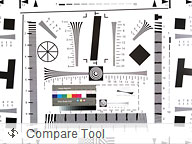


Samsung Galaxy Note5 in our Photo Comparison Tool
4K video capture
There's no dedicated video mode because most settings work for videos too. Even Pro mode, though you can't adjust the settings during recording and the autofocus will override your setting as soon as the video starts.Anyway, the Samsung Galaxy Note5 tops out at 2160p resolution, but it can also do QHD video, 1080p at both 30fps and 60fps and 720p video at up to 120fps (that's handled by the Slow Motion mode).
The 120fps video needs slowing down via a video editor such as the one on board the Note5 or one on your computer. The frames are all there, it's just that it's not slow-mo.
The front camera shoots only at 30fps, but it can shoot QHD video to match the phone's screen.
HDR and color effects are available for video, though choosing the 2160p recording mode disables these effects, as well as the option to take pictures while shooting video, the tracking autofocus and the additional software stabilization.
Final words
Samsung Galaxy Note5 is the best looking iteration of the phablet to date. In line with the Samsung Galaxy Note tradition, the latest generation is also the most powerful phablet available today by quite a margin. The S Pen once again defines the Samsung Galaxy Note5 as a product.
As expected, the newcomer's stylus is better than ever with new tricks
to go with its clickable release mechanism.
The S Pen once again defines the Samsung Galaxy Note5 as a product.
As expected, the newcomer's stylus is better than ever with new tricks
to go with its clickable release mechanism.Key test findings:
- Design and build quality have taken a massive leap since the previous generation - they finally completely match the device's price tag and market positioning;
- The combination of Samsung's Exynos 7420 chipset and 4GB of RAM is the best available on a smartphone at the moment.
- Once again, the screen is among the best units out there.
- The 16MP camera is an improvement over the impressive snapper in the Galaxy Note 4.
- The S Pen has learned new tricks, but is now more slippery than its predecessors.
- Despite its smaller battery, Samsung Galaxy Note5 offers excellent battery endurance.
- Quick wired and wireless charging options are effective and incredibly convenient.
- The fingerprint sensor is excellent.
- Audio quality is worthy of the device's flagship status.
- Samsung's TouchWiz UX offers superb experience for large screen devices.
- Samsung Pay looks poised to become the best mobile payment solution on the market.
- The body of Samsung Galaxy Note5 can be slippery and prone to smudges.
- Stereo speakers are a starting to become a glaring omission in the specs this far in 2015.
- Lack of microSD card slot is a tough one to swallow - 128GB Galaxy Note5 would have helped on this instance.
- We wish Samsung had opted to keep the IR blaster in the Note5.
- The 32GB variant is difficult to recommend, as it offers less than 25GB available to the user.
- Lack of availability in key market such as Europe is a bit difficult to comprehend.
The 5.7" QHD display and the 16MP camera, in line with Samsung's own tradition, are both excellent. The same goes for the S Pen, whose functionality is yet to be matched by any Galaxy Note 5 competitor.
Contrary to the Internet's fears, the 3,000mAh non-removable battery found in Samsung Galaxy Note5 delivered impressive performance in our battery test. The handset's endurance should be sufficient for even the most seasoned power users, while the quick charging options allow easy top ups.
Samsung has offset the lack of removable battery by making the Note5 sleek, beautiful, and compact. We reckon that these qualities are a fair trade off for the omission of the feature.
The connectivity options offered in the Galaxy Note5 are many and convenient, though we really wish that Samsung kept the IR blaster around. Samsung Pay on the other could well become the best mobile payment solution when it goes live in the weeks ahead.
Lack of expandable memory is the biggest gripe we have with Samsung Galaxy Note5. The absence of cheap expansion makes the entry-level variant of the device difficult to recommend, as it comes with roughly 25GB of memory available to the user. It seems to us that Samsung is betting big that most users of the device will rely heavily on cloud storage for their daily needs.
The above conundrum leaves the 64GB version of Samsung Galaxy Note5 as the model that just about everyone should go for. It would have been great if the manufacturer had released a variant of the phablet with 128GB of that sweet UFS 2.0 memory, but a final decision is yet to be taken on this instance.
Samsung Galaxy Note5 is priced between $700 and $800 in the United States, depending on the amount of built-in memory one chooses. As always, below are some of the handset's notable rivals.
Fancy an S Pen, a removable battery, and microSD card slot? Last year's Samsung Galaxy Note 4 and Galaxy Note Edge might be just for you. The screen is the same, but the fingerprint reader is no good and the design is arguably miles behind what the Note5 offers.
The duo of Samsung's 2014 flagship phablets are neither as powerful, nor as good looking as the Note5. They do however, come with lower price tag and the above mentioned power user-centric features.
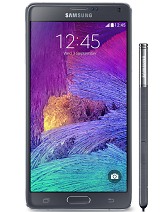

Samsung Galaxy Note 4 • Samsung Galaxy Note Edge
Love the Note5, but don't care about an S Pen? Enter Samsung Galaxy S6 edge+ with the same hardware as the Note5, save for the lack of stylus.

Samsung Galaxy S6 edge+
Samsung Galaxy S6 edge+ is gorgeous, but it's more expensive than the Note5. It will also be the only choice for users looking for a 2015 flagship phablet by Samsung in Europe for the time being.
Apple iPhone 6 Plus and, more specifically, its upcoming successor will be the biggest rivals to the Galaxy Note5 in the smartphone realm. The successor of Apple's first phablet is expected to hit the shelves in the second half of next month.
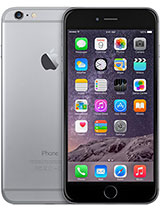
Apple iPhone 6 Plus
As we know all too well by now, the Cupertino giant's offering will count its rich app ecosystem and overall user experience to attract users. Spec for spec, it will almost certainly not match what Samsung Galaxy Note5 has to offer.
LG G4 is the only "old school" flagship to come out this year, packing both a replaceable battery and expandable memory. The leather-clad G4 is also cheaper, but nowhere near as powerful as the Note5. It also lacks goodies such as wireless charging, fingerprint sensor, and of course an S Pen.
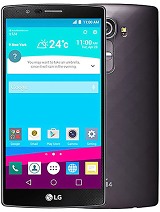
LG G4
Moto X Style is cheaper, customizable, and with microSD card and stereo speakers on board. However, the now Lenovo offering lags behind the Note5 in terms of hardware oomph. Fingerprint and heart rate sensors are a no-go in the Moto X, as is an available stylus.
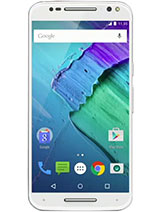
Motorola Moto X Style
The S Pen and the superior hardware are more than enough to keep the device head and shoulders above its closest competitor. The fact that the latter is a Samsung device speak volumes about the body of work the company has done since founding the segment back in 2011.
Even though it lacks a microSD card slot and a removable battery, Samsung Galaxy Note5 is still the measuring stick for what a flagship phone with large screen should do and a darn great piece of hardware. Therefore, we find the device easy to recommend to anyone with the budget to pick one up.
Subscribe to:
Post Comments
(
Atom
)






















































































No comments :
Post a Comment